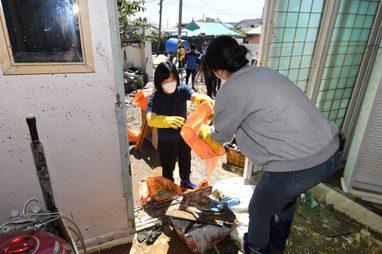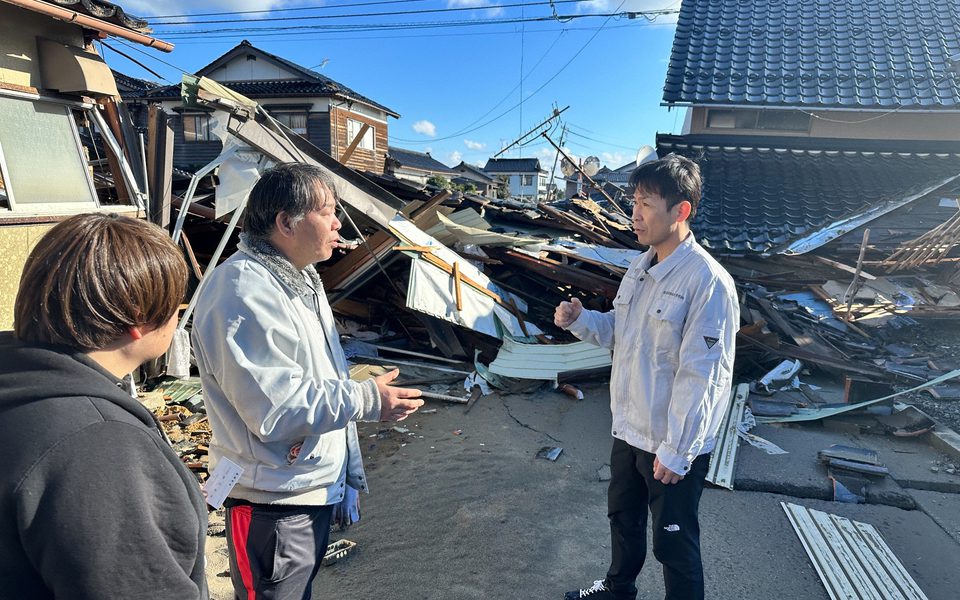
Photo credit: © Seikyo Shimbun
On 1 January 2024, a magnitude 7.6 earthquake struck the Noto Peninsula in Ishikawa Prefecture in Central Japan. The quake devastated the region, injuring at least 1,300 residents and claiming over 300 lives in total. According to Japan’s Cabinet Office, more than 127,000 houses had been reported as damaged as of July 2024, forcing over 40,000 people at peak to take shelter in public evacuation centers.
Despite efforts following the disaster over several months, lifelines and infrastructure are still in the process of being restored. Running water remained cut off across many parts of the northern Noto Peninsula until May 2024, due to damaged water purification plants and water pipes. In addition, significant portions of a key national highway remained closed during the first month of the disaster, impacting the delivery of relief supplies. Some roadways still remain under reconstruction. These challenges were compounded by the demographic composition of the worst-hit areas, where 43% of the population are 65 years of age or older, increasing vulnerability.
Soka Gakkai in Japan’s Response
Immediately after the quake, the Soka Gakkai in Japan set up emergency communications centers at its headquarters and in affected areas to streamline its relief activities. Seven Soka Gakkai facilities in Ishikawa and Toyama prefectures provided shelter to over 300 local citizens, serving as short-term evacuation centers.
On 2 January, the Soka Gakkai began delivering stockpiled relief supplies from its facilities throughout Japan to the disaster-affected region. Trucks carried necessities such as food, water, blankets, sanitary goods, warm clothing and temporary toilet units. Local volunteers then distributed these supplies to 12 locations for people in need to pick up. Nine of these locations were individual Soka Gakkai members’ homes.
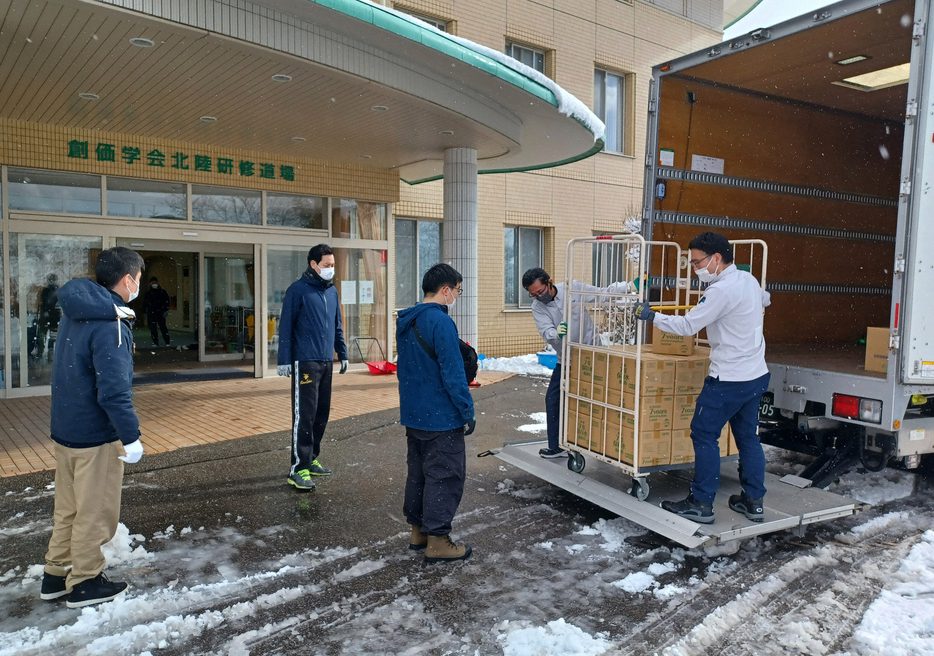
Volunteers help unload relief supplies at the Soka Gakkai center in Nanao City, Ishikawa Prefecture, on 8 January 2024. | Photo credit: © Seikyo Shimbun
The Soka Gakkai in Japan also made donations to 14 municipalities in Ishikawa and Toyama prefectures to aid relief operations.
As a faith group, the Soka Gakkai tapped into its strong local network. Members understand the area’s geography, communities and the needs and vulnerabilities of each individual and household.
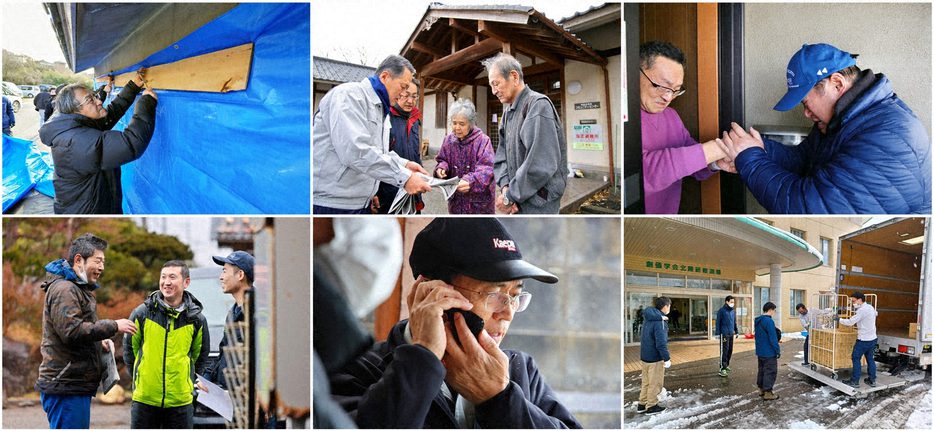
Grassroots action | Photo credit: © Seikyo Shimbun
Rebuilding Community
Soka Gakkai members in the region took immediate action to support relief and recovery efforts. For example, a couple who run a noodle restaurant in Nanao City provided nearly 100 free meals to their neighbors in the first three days following the earthquake.
Another couple, Nobuhiko Noya and his wife Masako, lives in a town in Suzu City, one of the areas most severely damaged by the earthquake. The town was unrecognizable; most of the houses were destroyed, the ground had risen and roads to the town were cut off due to rockfalls and landslides. The day after the earthquake, Nobuhiko, who is a leader of the local town association, visited each of his neighbors to check in on them.
By the end of January, nearly 80 residents had left this town for safety reasons. The remaining 10 people, including the couple, gather every afternoon to encourage and support one another. Nobuhiko has been working closely with the local government to coordinate relief supplies for the town, while Masako has encouraged her neighbors by reaching out to them and sharing meals.
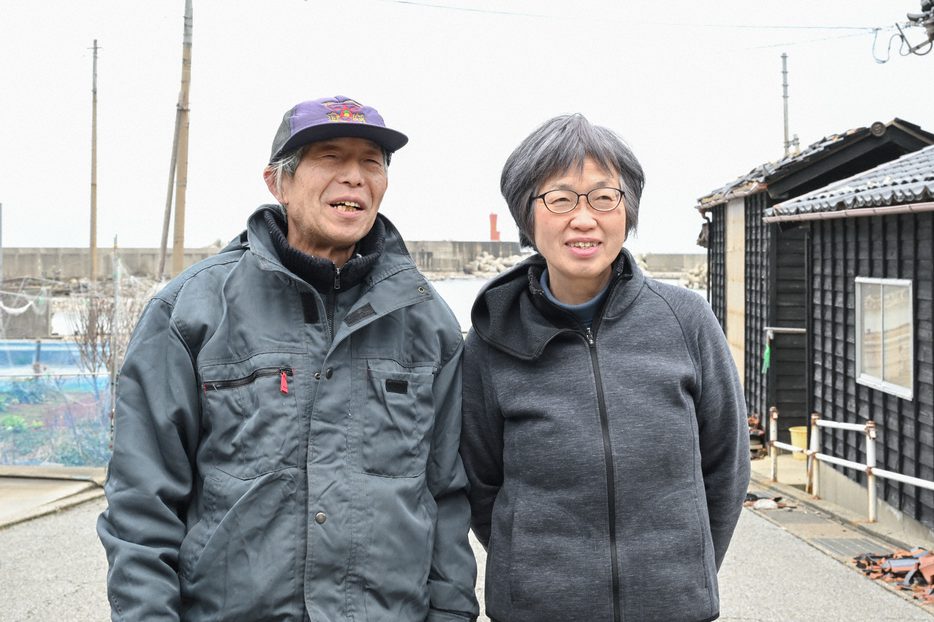
Nobuhiko and Masako Noya in Suzu City | Photo credit: © Seikyo Shimbun
Also, a group of young volunteers from the Soka Gakkai was formed in Ishikawa Prefecture and Toyama Prefecture to assist in clearing rubble from damaged houses. From 10–12 February, the volunteers from nearby areas visited those affected in Nanao City and the town of Shika to help carry and dispose of damaged furniture and household goods.
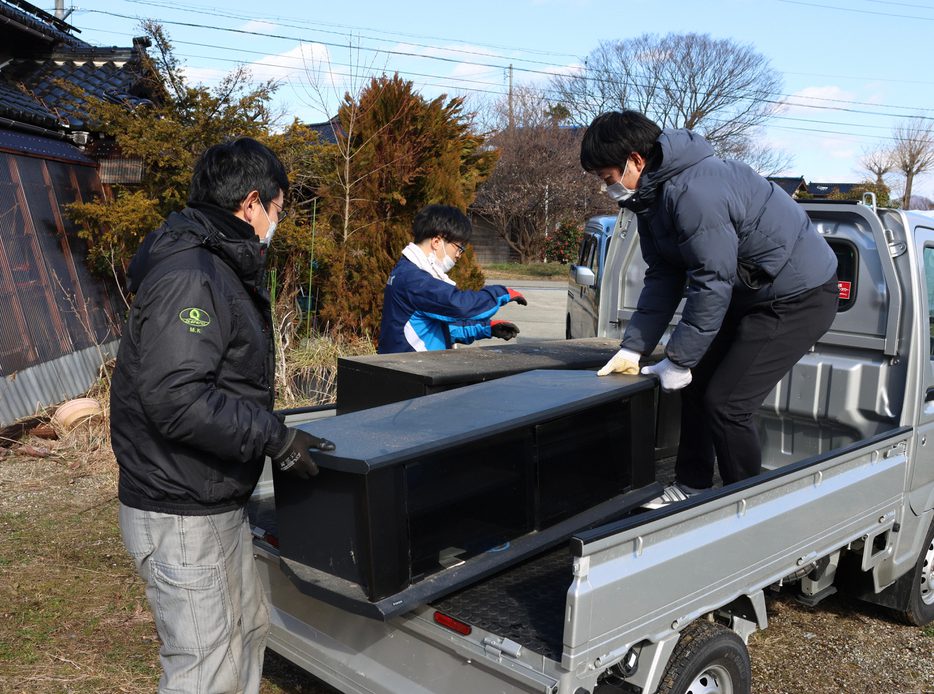
Local youth volunteers carry damaged furniture in the town of Shika on 11 February 2024. | Photo credit: © Seikyo Shimbun
In addition, a number of youth members from across Japan traveled to the region to support local relief activities. One such volunteer, Yuki Kawanaka, shared how moving it was to see members in Ishikawa—some of whom have experienced severe losses themselves—encouraging isolated, elderly people by visiting them and bringing them water and food.
Since the outset of the disaster, local Soka Gakkai members have been encouraging one another to never give up hope. Local leaders have stressed the importance of listening to and extending warm care and support to each individual, taking into account the unique circumstances they are facing.
These efforts illustrate how crucial existing community networks are to effective relief efforts, a point stressed by scholar Professor Daniel P. Aldrich, who studied the importance of community ties in recovery following the 2011 Great East Japan Earthquake. Aldrich himself experienced losing everything in Hurricane Katrina, which he describes in his book Building Resilience: Social Capital in Post-Disaster Recovery.
In the book, Aldrich argues that economic measures alone are not enough for disaster survivors to fully recover. Communities are rebuilt through both “population recovery and the (re)creation of bonds among neighbors.” Most survivors see social connections and community as critical for their recovery, according to Aldrich. His experience underscores the importance of grassroots, community-led efforts.
As a faith-based organization, Soka Gakkai continues to forge bonds of encouragement among the local communities affected by the Noto Earthquake, focusing on rebuilding not only the infrastructure of the affected areas but also building resilience and imparting hope to community members.
